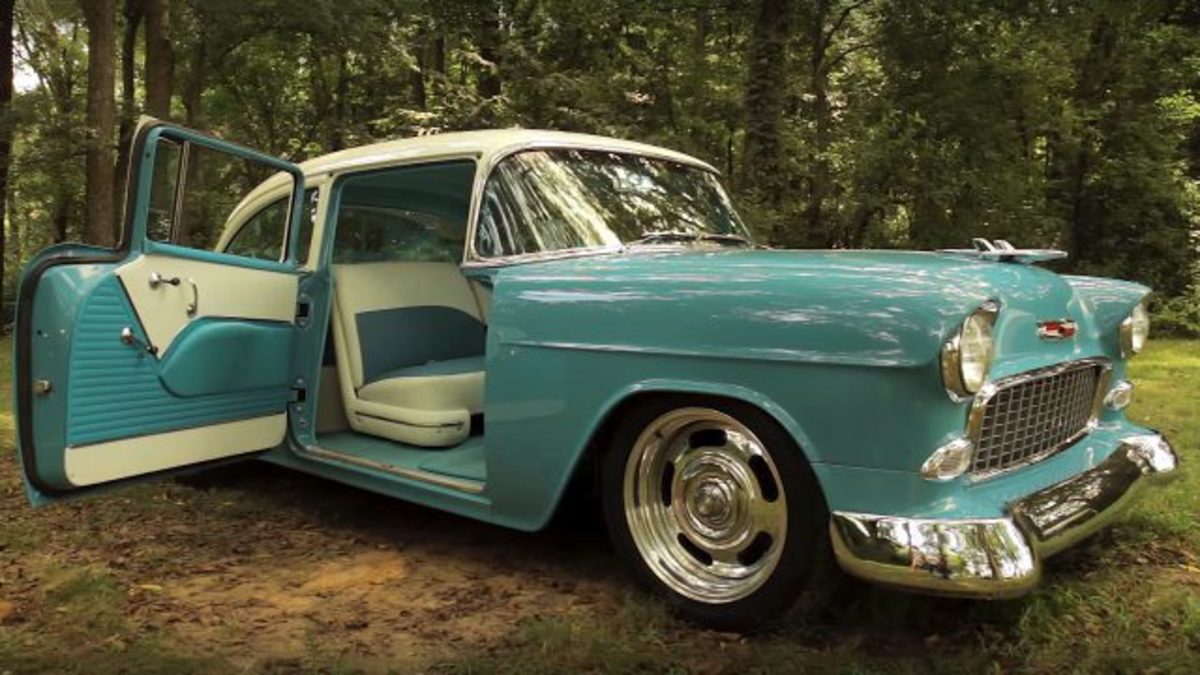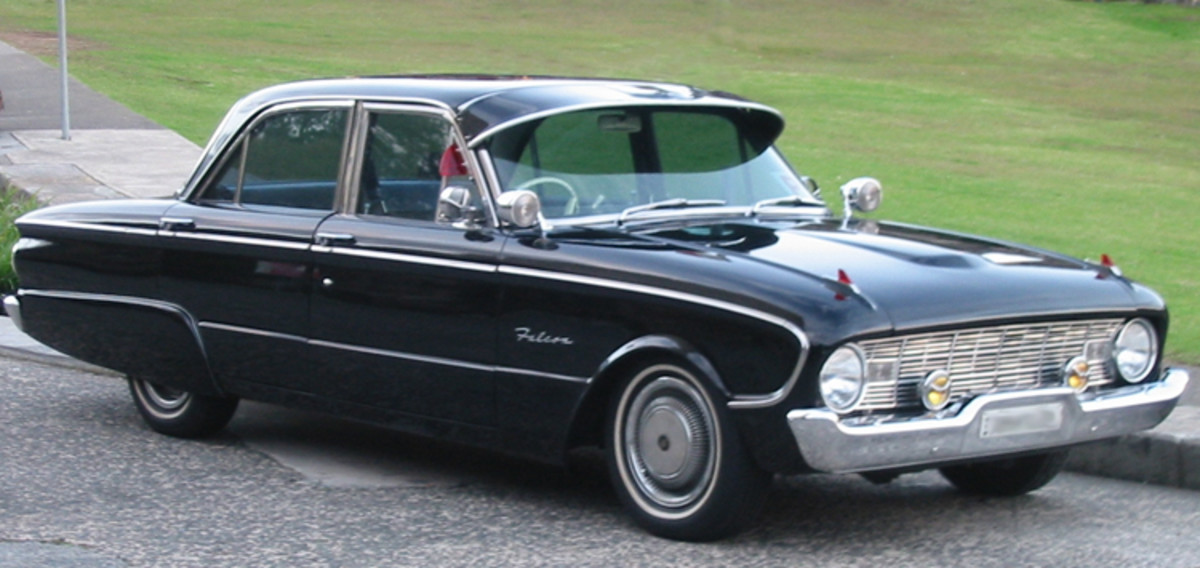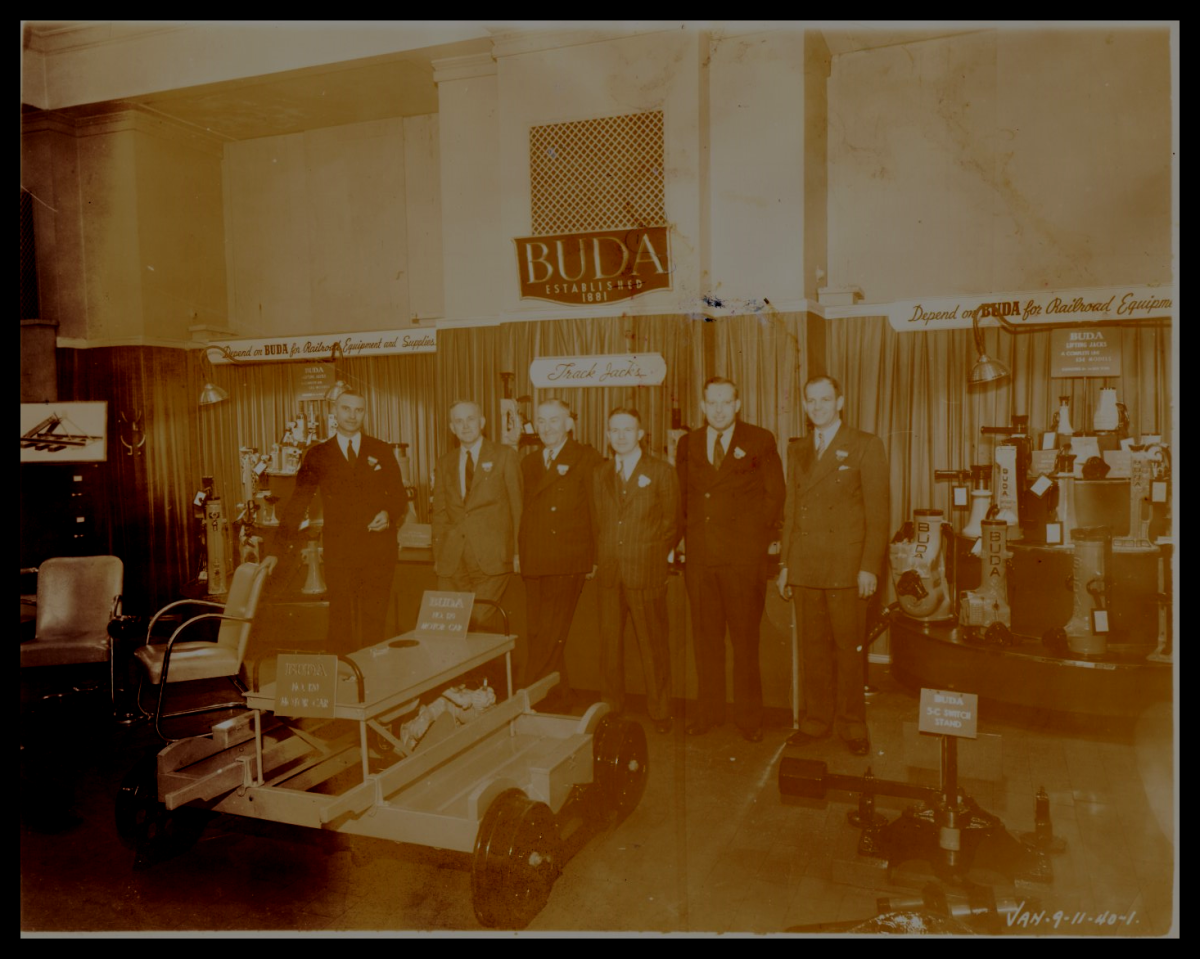Henry Ford's Model "T"


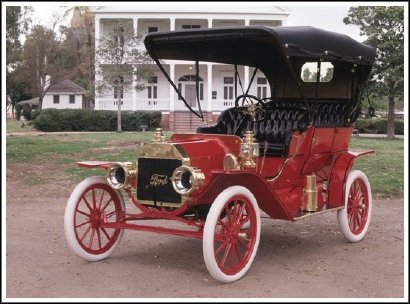
Henry Ford once said "I will build a motorcar for the great multitude." He was true to his word. He built a tough, hardy vehicle, cheap enough for the multitudes to afford. It was called the Model “T” Ford. It was also known as a “Tin Lizzie” and a “Flivver.” It’s not certain where these nicknames originated, but its thought Lizzie may have been derived from the name "limousine." Ironically, "Flivver" meant anything that was a failure or a flop.
Officially, the first one rolled off the assembly line in Detroit, Michigan on September 27, 1908, although it is thought several other experimental models were made before that. Initially, the car came without a starter, generator, electric lights, oil pump, water pump or fuel pump. But, changes in the cars’ design continued throughout its’ lifetime until the end of the Model T's production in 1927. It is interesting to note, after the first 500-800 vehicles, the three pedal transmission and non-water pump engine were incorporated.

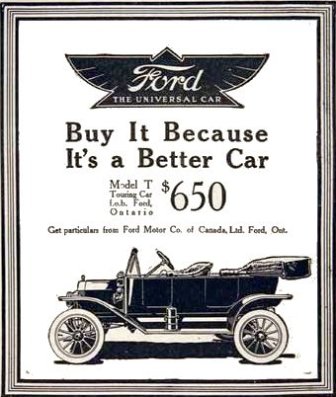
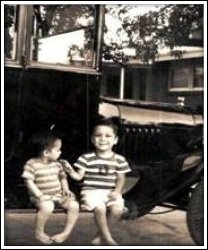
The first couple of thousand came in several different models. These were; Touring, Runabout, Town Car, Laundaulet, Coupe and Tourabout. The basic sticker price was $825, or roughly $18,000 in today's currency.Ford built about 15 million of them and at one time almost half of all cars in the country were Model T’s. It was the longest production run in history, except for the Volkswagen Beetle which surpassed it in 1972.
Before Model T’s, cars could only be afforded by the wealthy and socially elite and fewer than 200,000 were on the nation’s unpaved roads. It had a 22-horsepower, 4-cylinder engine, weighed approximately 1,200 pounds and had a top speed of about 45 mph. It also got a whopping 25 miles per gallon, better than many cars still on the road today.
What made the Model T affordable was assembly line manufacturing. Ford did not invent the assembly line, but after years of experimentation and trial and error, he perfected it. However, Henry Ford’s business acumen also played a part. By producing only one model, parts became interchangeable, reducing waste, and time. However, there was one basic complaint by customers…for many years it was available only in basic black.
From 1908 to 1914, the Model T was not available in black, only grey, green, blue, and red. And by 1912, all were painted midnight blue with black fenders. It was in 1914 the all black policy was instituted.
Before the assembly line, cars were individually crafted and it was slow and expensive. The assembly line changed all of that. Assemblers no longer had to go to the car, it came to them. Each worker could now repeatedly perform one task. This process cut assembly time in half. What used to take 12 hours was now done in 6. Ford's system eventually dropped that time to one every 24 seconds.
Henry Ford founded his company in 1903 and produced several models before the Model T. Although Ford started with the Model "A", there were not 19 production models as one might assume. Some were only prototypes.
Few things ever changed on the Model T. The major changes included:
· Electric lights in 1915
· In 1916 the radiator shell changes from brass to black
· In 1919 an electric starter became an option on closed cars.
These were the only changes until the mid-1920s.
Although the Model T was designed as a road vehicle, many enterprising individuals, especially in rural farming areas devised ways to use the Model T in alternative ways. For example, it could have a rear wheel removed, a pulley fastened to the hub and converted into a flat belt drive to power any assortment of power tools such as an electric generator or a water pump for wells. It didn’t take long before companies began selling kits to convert the car into trucks or tractors.
However, newer technology and more modern designs began taking its toll on America’s favorite vehicle. After about 20 years and more than 15 million Model T’s the last one rolled off the line in May 1927.
Around the turn of the 20th century, the Model T was elected “Car of theCentury” by an international panel of automotive journalists and other industry experts. Today, Model T enthusiasts have formed clubs for the preservation and restoration of these historic cars.



